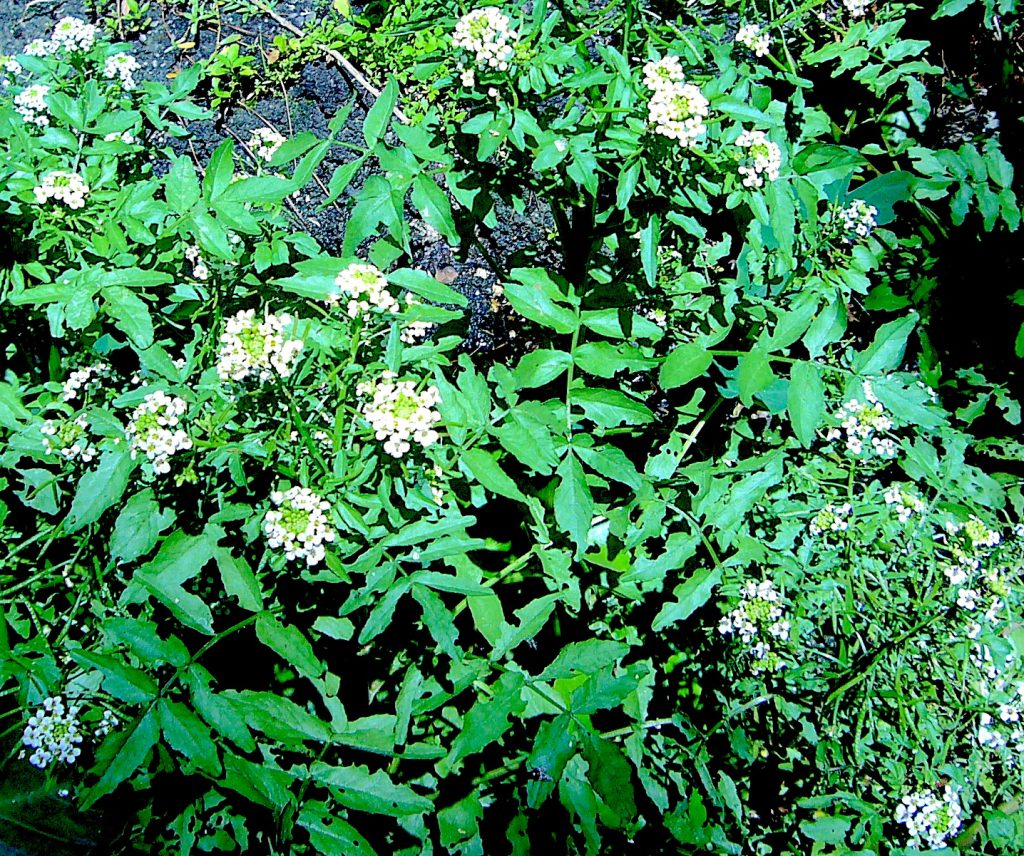
Watercress/Wintercress grew in a ditch behind an apartment complex I lived in near Sanford, Florida, some 30 years ago. How did the Eurasian native Nasturtium officinale, get there? It came to North America with the Europeans, found a good home, and stayed. Alabama became the epicenter of cultivating it then later Central Florida. Sanford, by the way, is named for Henry Sanford one of Lincoln’s ambassadors. He is called “General Sanford” but the gentleman never served in the military. He got the title for donating a cannon to the Union effort. Sanford was, however, big on big farming and for a few decades made the city of Sanford the big place to go in Central Florida nor Orlando.
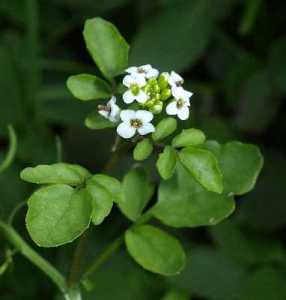
When President Calvin Coolidge came to Central Florida in 1929 it was to Sanford he went not little-ol’ backwater Orlando. The city of Sanford had everything: River, rails and road. But it lacked leadership giving Orlando a chance to make its mousey mark. As Coolidge did so did watercress which is why it ended up in the ditch behind the apartment complex in Sanford. The entire area was truck farms and one of their winter crops was watercress. Peppery like nasturtiums it is edible raw or cooked but make sure you get it from wholesome water. Nasturtium by the way literally means “twisted nose.” Where I collect watercress to be eaten raw is about a half mile down stream from the Wekiva River boil (its main spring and headwater.) But there’s a lot of water hemlock around so I have to pick carefully. To read more about watercress go here. To read about the deadly Water Hemlock go here.
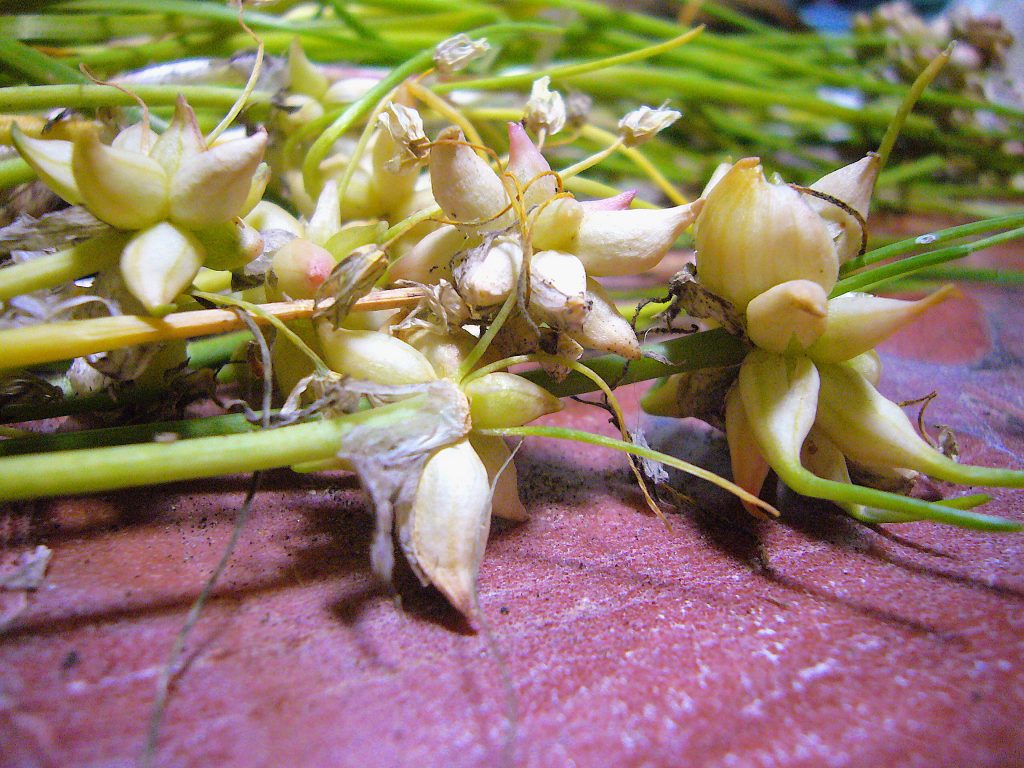
After Watercress the second plant in profusion now is Wild Garlic. It is just putting on cloves and there was a small field of it Gainesville near where I had a foraging class this past weekend. Wild Garlic is always a delightful find; pungent, sharp, tasty. You just know it was a welcomed spring green and flavored many an ancient meal. After a little drying I store the cloves in the frig in a paper bag. The onions go in the bin for more immediate use. If I lived near the field in Gainesville I would just dig them up as needed. Wild garlic, wrongly called wild onion, is unusual in that it puts cloves on the top of its stem, not underground on the bottom. (Onions put on a bulb, garlic puts on cloves.) This wild Allium also puts on a ping-pong ball size onion underground, about four inches down or so. It hides most of the year. To read more about the wild garlic, click here.
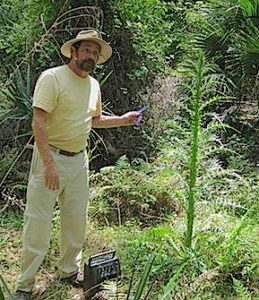
I’m on the east coast of Florida this weekend with classes in Ft. Piece Saturday and Melbourne this Sunday. Both locations, interestingly, have Tallow Plums fruiting and ripening now. Note Largo has been re-introduced to the foraging class schedule.
Saturday, April 13th, George LeStrange Preserve, 4911 Ralls Road, Fort Pierce, FL, 34981, 9 a.m. to noon. Meet at the parking lot.
Sunday, April 14th, Wickham Park: 2500 Parkway Drive, Melbourne, FL 32935-2335. 9 a.m. to noon. Meet at the “dog park” inside the park.
Saturday, April 20th, Blanchard Park, 10501 Jay Blanchard Trail, Orlando, FL 32817. 9 a.m. to noon. Meet next to the tennis courts by the YMCA building.
Sunday, April 21st, Eagle Park Lake, 1800 Keene Road, Largo, FL 33771. 9 a.m. to noon. Meet at the pavilion near the dog park.
Saturday, April 27th, Red Bug Slough Beneva Road, Sarasota, FL, 34233. 9 a.m. to noon. Meet at the parking lot.
Saturday, May 4th, Colby-Alderman Park: 1099 Massachusetts Street, Cassadaga. Fla. 32706. 9 a.m. to noon. Meet by the bathrooms.
Sunday, May 5th: Ft. Meade Outdoor Recreation Area, 1639 Frostproof Highway, Fort Meade, FL 33841. (Frostproof Highway is also Route 98.) 9 a.m to noon. Meet at the brown bathrooms in the middle of the park which is due south from the highway.
Saturday, May 11th, Dreher Park, 1200 Southern Blvd., West Palm Beach, 33405. 9 a.m to noon. Meet just north of the science center in the north section of the park.
Sunday, May 12th, Lake Woodruff National Wildlife Refuge, 2045 Mud Lake Road, DeLeon Springs, FL. 9 a.m. to noon. A few hundred feet after crossing the railroad tracks on Mudlake Road there in the parking lot on your right. We meet there. This is a hike of approximately four miles, two out and back mostly native species, very few ornamentals. While the walking is easy we are exposed to the elements, sun on a clear day, wind on a cold day. Check the weather, dress appropriately. Bring water, wear suitable footwear. Know that as it is federal land it can be closed anytime for any reason without notice.
Saturday, May 18th, Florida State College, south campus, 11901 Beach Blvd., Jacksonville, 32246. 9 a.m. to noon. We will meet at building “D” next to the administration parking lot.
Sunday, May 19th, Boulware Springs Park, 3420 SE 15th St., Gainesville, FL 32641. 9 a.m. to noon. Meet at the picnic tables next to the pump house.
For more information about the classes or to sign up go here.
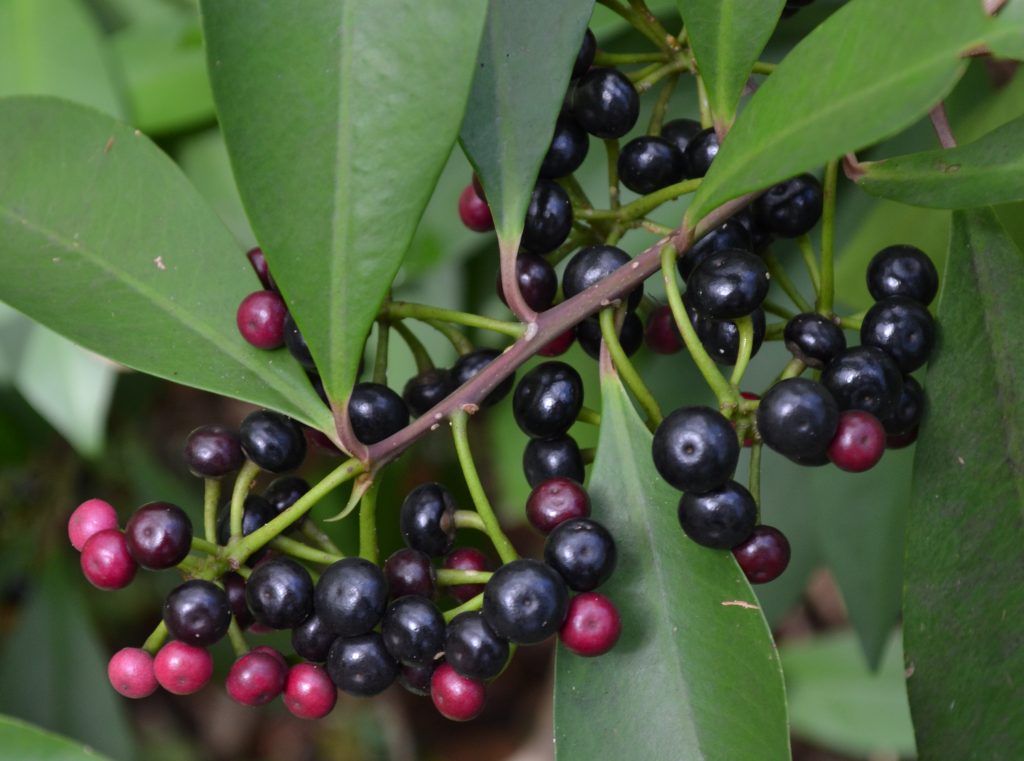
Marlberries and I don’t meet too often, about once or twice a year and then usually while I’m conducting a class so I don’t have the time to get acquainted better. There is also a certain lack of motivation because even at its best marlberry is not a great trailside nibble. A complicating headache is there are several malberries of varying quality. They are also related to the invasive species Coral Berry, Ardisia crenata, which has been implicated in cattle poisoning. Reportedly found mid-Florida and south I have found Marlberries in Dreher Park in West Palm Beach, LaStrange Preserve in Ft. Pierce, and Emerson Point near Sarasota. As I have a foraging class in LaStrange this week and a private class at Emerson next week perhaps Marlberries and I will get a little more acquainted. Around the same time and in the same habitat you find Marlberries you can also see Rapanea punctata, Colicwood, one of those mystery pants one finds in wet woods this time of year. It looks like a drab cross between a mangrove and a beautyberry and used to be called Myrsine guianensis. Colicwood’s small yellow blossoms and black fruit grow directly on the branches, helping you identify it. There’s not a whole lot of literature on the species so the berries are probably not edible. As it is called “Colicwood” suggest some medicinal uses. To read more about the Marlberry and its strange relatives go here.
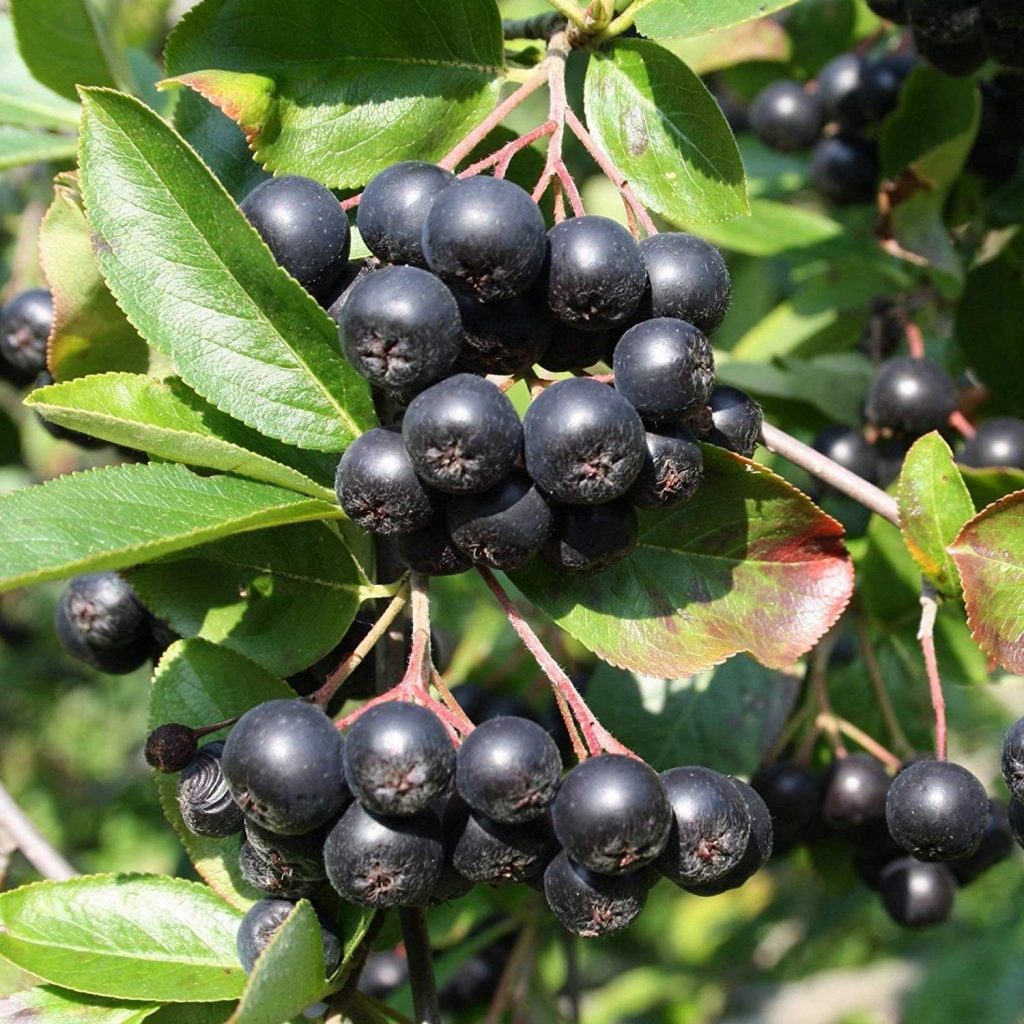
Another possible local species I need to study more is Aronia. also called Chokeberry (note it is chokeBERRY not chokeCHERRY.) They are common in the Carolinas particularly on the Appalachian Trail where they get the 800 or so chill hours they need each winter. The berries are a powerhouse of anti-oxidants. Like Morels they shouldn’t be found in Florida as it just does not get cold enough long enough here but yet… In Gainesville, Florida, I have seen a species that might be A. melanocarpa. Here at EatTheWeeds we use I.T.E.M. and E is for environment which includes climate and Florida is the wrong environment for the species. However, if you plant Aronias they will grow here and apparently fruit. It has been reported in Hawthorne Fl. which is 20-some miles down the road from Gainesville. In this case they are growing with a profusion of Deerberries near the Hawthorn Trail which are blossoming now and were mentioned in last week’s newsletter. Perhaps the Aronia was intentionally planted many years ago.
Making you own vinegar is not a complex process and following the process leads to success… eventually. Unfortunately many articles on the internet are high on praise and short on process.
I read one a few days ago that said get some fresh cider, put it in a container with a cloth over the top and in a couple of months you will have healthy, delicious vinegar. While that is not impossible it is not probable. I have made a lot of homemade vinegar and the process mentioned above always ended in smelly failure. It was only when I knew how to take control of the process did I actually make tasty vinegar of appropriate acid strength to be used for preserving and/or salads.
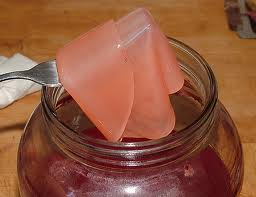
Red Wine Vinegar Mother also know as a Mycoderma.
The two major steps are collecting an acid bactar that throws a good flavor and then putting it in some un-chemicalized low-proof alcoholic beverage to turn it into vinegar. If you want to know the bare process yeast turns sugar to gas and alcohol then a bacteria turns the alcohol into acetic acid which is vinegar. Putting out a container of cider to ferment and turn to vinegar is letting nature choose the yeast and the bacteria. You could get two winners but even one loser turns the must into a mess. To read more about making vinegar go here.
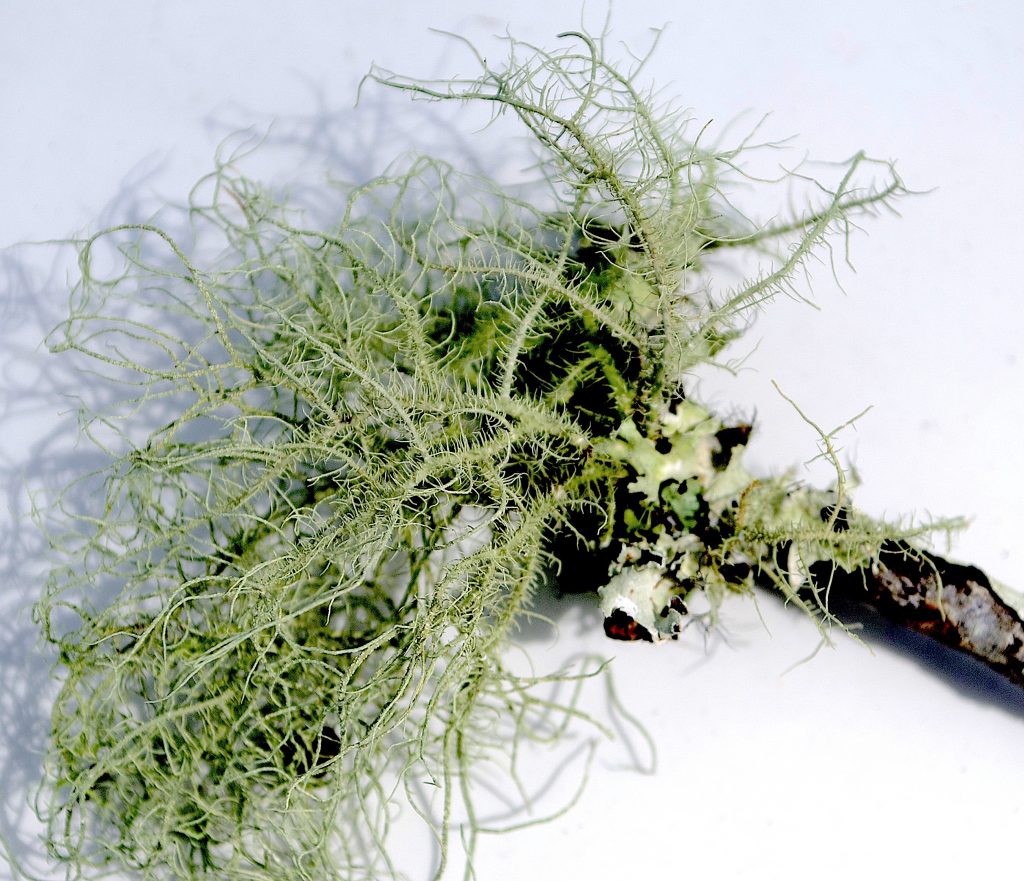
Almost all lichen are edible once leached of their bitter acids. The flavor ranges from bad to almost palatable. But, they are high in calories, have saved many a stranded hunter or downed pilot, and are found nearly worldwide. Lichens have been used in dyes, deodorants, laxatives, expectorants, tonics, and as one monograph put it, “healing pastes.” They are also an indicator of clean air. We’re more interested in Usnea than Ramalina for its medicinal qualities. Usnea is basically an antiseptic. While Ramalina and Usnea resemble each other there are three main differences: The Ramalina’s stems are flatish, Usnea is round; Ramalina does not appear to be hairy, Usnea looks hairy; and only Usnea — among all the many species of lichen, has an elastic, white inner core. If you want to read more about lichen (Yes, the rag lichen is edible but it tastes like dirty tree bark.)
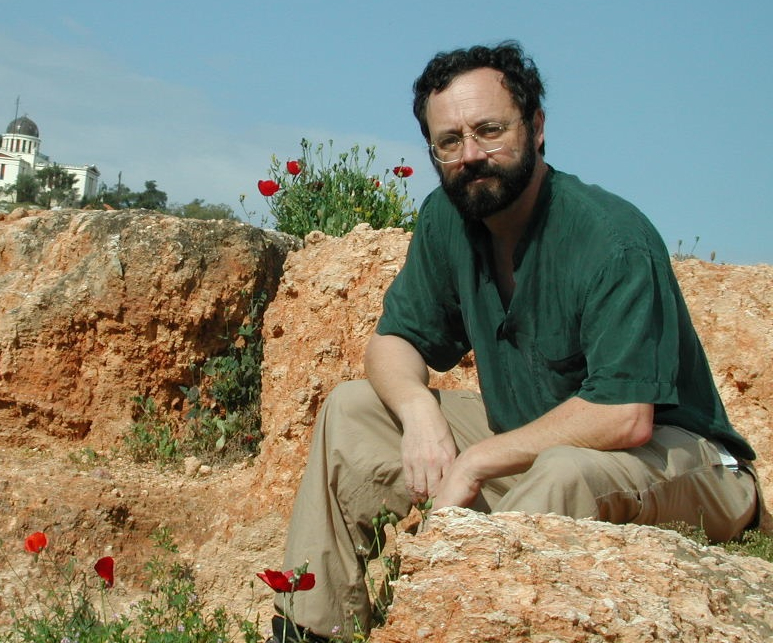
All My Videos are available for free on You Tube. They do have ads on them so every time you watch a Green Deane video I get a quarter of one cent. Four views, one cent. Not exactly a large money-maker but it helps pays for this newsletter. If you want to see the videos without ads and some in slightly better quality you can order the DVD set. It is nine DVDs with 15 videos on each for a total of 135 videos. Many people want their own copy of the videos or they have a slow service and its easier to order then to watch them on-line. The DVDs make a good gift for that forager you know especially as spring is … springing. Individual DVDs can also be ordered or you can pick and choose. You can order them by clicking on the button on the top right hand side of this page (if your window is open wide enough.) Or you can go here.
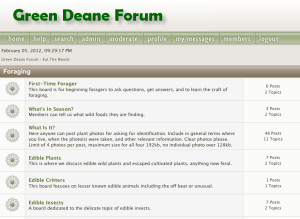
Want to identify a plant? Looking for a foraging reference? Do you have a UFO, an Unidentified Flowering Object you want identified? On the Green Deane Forum we chat about foraging all year. And it’s not just about warm-weather plants or just North American flora. Many nations around the world share common weeds so there’s a lot to talk about. There’s also more than weeds. The reference section has information for foraging around the world. There are also articles on food preservation, and forgotten skills from making bows to fermenting food. One special section is “From the Frightening Mail Bag” where we learn from people who eat first then ask questions later. You can join the forum by clicking on “forum” in the menu.
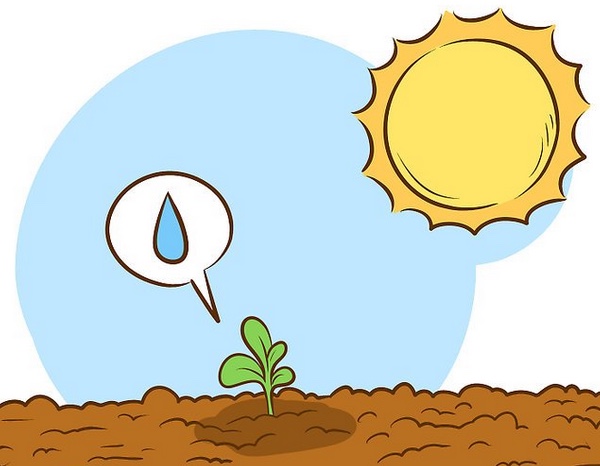
Donations to upgrade EatTheWeeds.com have gone well. Thank you to all who have contributed to either via the Go Fund Me link, the PayPal donation link or by writing to Green Deane POB 941793 Maitland FL, 32794.
This is weekly issue 350.
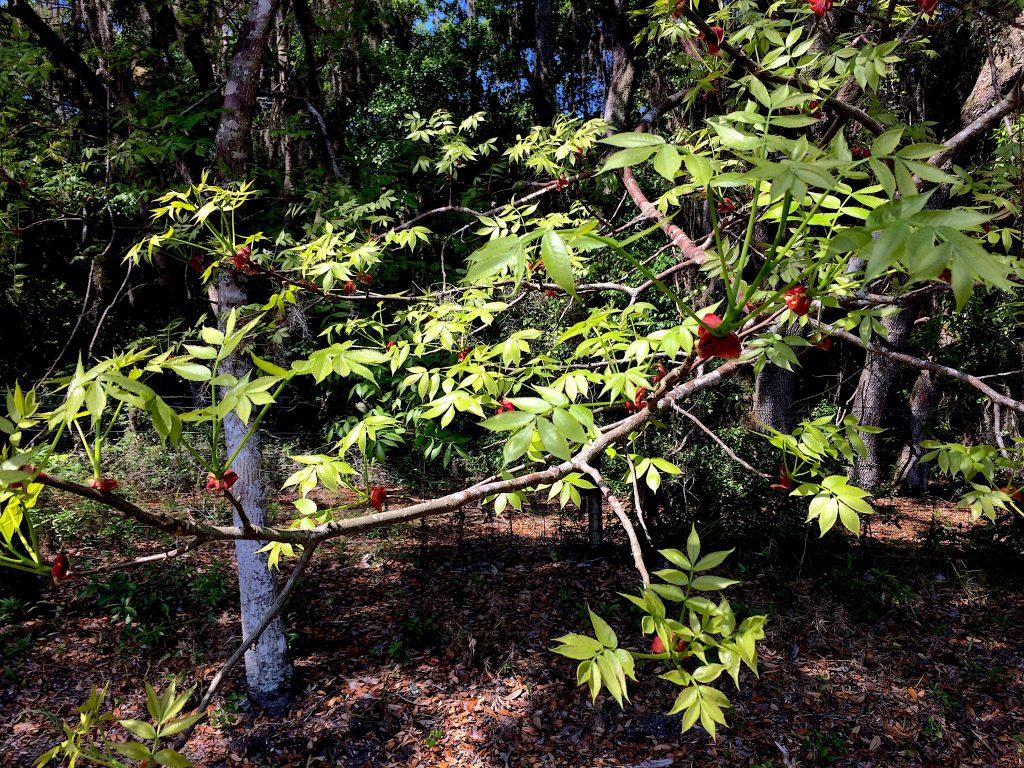

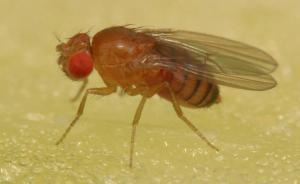

Thanks so much for the information on usnea. Just this morning I was trying to ID my lichen; hoping it was usnea. Great description and pictures in your newsletter! So pleased to have confirmation that I have this wonderful plant throughout my property. Now to get a tincture going! Thanks again.
Thank you for your interesting and always informative newsletters. I look forward to reading them and learning new tidbits about foraging!